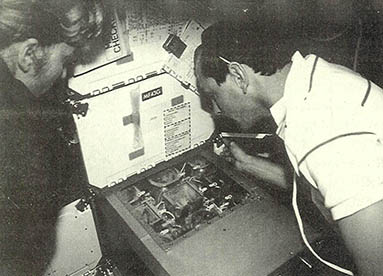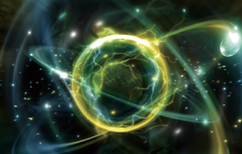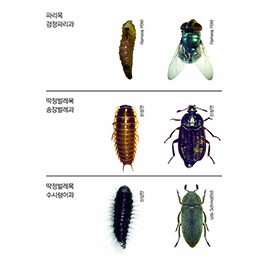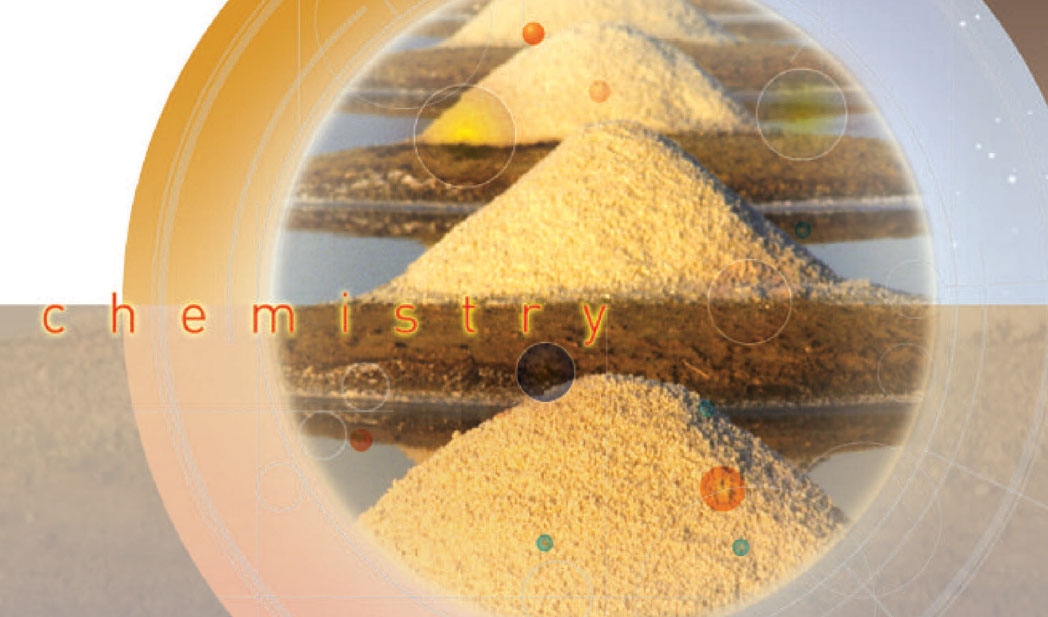
우주공간에서 올챙이라니! 우주왕복선 엔데버호의 궤도상에서 두마리의 아프리카산 발톱달린 개구리들이 배란을 해 6백여개의 알들이 수정됐다. 그중 절반 가량은 인공적으로 중력을 갖춘 원심분리기 내에서 배양되고 나머지 절반은 '마이크로중력'상태에 남겨졌다. 또 다른 세번째의 알들은 우주왕복선이 지구를 떠나기 전 이미 수정된 것이었다.
중간보고에 따르면 우주왕복선에서 수정된 두 무리의 정상적인 올챙이들은 지구상의 올챙이들과 비슷하게 헤엄치고 있다. 과거 비행기 내의 중력이 없도록 만든 모의 환경에서 짧은 시간 실험해본 때도 올챙이들은 정상적으로 헤엄을 쳤다. 반면에 지구에서 수정된 후 우주궤도상에서 깨어난 올챙이들은 꼬리를 접고 보다 작은 원을 그리며 다른 올챙이들에 비해 반대방향으로 헤엄치는 것으로 나타났다. 지난 주우주왕복선 엔데버호는 1백55마리의 살아있는 올챙이들과 함께(물론 우주비행사들도) 지구로 무사히 귀환했다. 생물학자들은 이 결과를 오랫동안 연구할 것이지만 아마도 지금까지 나타난 가장 중요한 사실은 무중력상태에서도 척추동물의 알이 성공적으로 수정되고 부화될 수 있다는 점일 것이다.
개구리들은(그리고 그들의 사촌격인 두꺼비와 도룡뇽과 영원들) 양서류로서 물속에서 알을 낳지만 어른이 되면 공기로 숨쉰다. 총 4만종의 척추동물중에서 4천종만 이 양서류다. 이들은 모두 크기가 작다. 오늘날 지구상에서 양서류는 그 숫자가 줄어들고 있으며 어떤 종은 사람들이 알을 먹는 물고기들을 생식시킴에 따라 멸종돼 가고 있는가 하면 물론 수질오염과 환경의 파괴에도 영향을 받고 있다.
많은 사람들은 양서류를 요리할 음식물이나 웃음거리로만 여긴다. 워드하우스의 소설에서 죽지않는 구시핑크 노틀은 영원(蠑蚖)을 관찰하느라 얼마나 바쁜지 평상시 생활에선 사고만 저지르는 것으로 묘사됐다. 또한 동화책에선 왕자가 개구리로 변했다가 용감한 공주가 입맞추면 다시 왕자로 변하기도 한다.
우주왕복선 엔데버호가 우주로 날아가기 훨씬 오래 전 부터 그 재미있고 조그마한 양서동물은 특히 엄청난 수의 알을 깨고 쉽게 관찰할 수 있다는 점에서 과학탐구에 도움을 주곤 했다. 양서류의 알은 예일대학의 동물학자이자 조직배양의 개발자인 로스 해리슨과 발생학의 체계를 세운 독일의 한스 스페만의 연구작업에서도 매우 중요한 역할을 차지했다.
양서류에 관한 연구는 계속되고 있다. 최근 네이처라는 잡지에서 인디아나 대학의 생물학자인 존 필립스와 크리스 볼랜드는 동물들이 어떻게 '자기나침반 본능'을 이용하는가를 최초로 설명했다. 붉은 점이 있는 동부의 수컷 영원은 '빛 의존 자장수신법'이라는 방법, 즉 광(光) 수용기를 이용해 지구자장과 반응한다.
양서류의 피부에서 나오는 분비물은 침략자들로부터 보호하기 위한 기능을 갖춘 독소로서 원주민들은 이를 미리 알고 독개구리로부터 나온 분비물을 자신들의 화살촉에 발라서 사용하곤 했다. 이제 모르핀보다 더 강한 진통제구실을 하는 분비물을 내는 개구리들도 발견됐다.
보다 흥미로운 점은 등은 푸르고 배는 흰 귀여운 호주산 나무개구리의 피부 분비물을 분석한 호주과학자들의 최근 보고서에서 나타났다. 이 호주과학은 항균성(抗菌性)과 항 바이러스성을 갖춘 화합물을 발견했는데 이는 인간에게 매우 유용하며 약리학적 연구대상이 될 만하다.
이 모든 것들은 양서류를 연구하며 얻은 놀랄만한 결과들의 일부에 지나지 않는다. 어쩌면 우린 지구상에 남아 있는 이들을 보호하기 위해 보다 많은 노력을 기울여야 할는지 모른다.
한편 포유동물이 등장하기 전에 사라져버린 양서류는 어떻게 된 것일까? 약 3억5천만년 전의 최초의 양서류는 지구를 정복하고 있었을 뿐 아니라 지구상의 최초의 척추동물이었다. 이 양서류는 경쟁자들도 없는 상태인 원시 지구에서 나름대로의 호황을 누렸다. 석탄기와 이 첩기를 거쳐 진화돼 가며 어떤 것들은 크기가 악어같은 파충류보다도 더 커졌다.
지금도 일부는 존재하지만 초기의 양서류는 어기적어기적거리는 모양으로 걸었는데 이는 사지가 현재는 멸종된 물고기들의 지느러미로부터 진화돼 몸체의 밑보다는 옆으로 나와있는 까닭이었다.
어떤 양서류는 5천만년 전 시신세 때 살았던 메세로바트라쿠스 개구리처럼 결국은 튼튼하고 효율적인 다리를 발달시켰다. 화석모양으로 남아있는 경우 이 개구리는 마크 트웨인의 소설에서 나오는 놀라운 현대의 높이뛰기 개구리와 너무도 닮은 것처럼 보인다. 또 다른 양서류는 아예 다리를 잃어 뱀처럼 보인다(이들도 물론 파충류다). 물론 어기적거리는 양서류도 필요하다면 제법 빨리 걷는 데 이것은 어디로부터 탈출하고자 열심인 도룡뇽을 붙잡으려 할 때 쉽게 알 수 있을 것이다. 뿐만 아니라 양서류는 그 많은 종이 피부로도 숨쉴 수 있지만 제법 좋은 폐를 가지고 있으며 방이 세개 있는 심장이 있어 많은 작은 크기의 포유동물보다도 오래 살 수 있다.
양서류의 역사와 우주 속의 올챙이의 경이로움을 살펴 보는 동안 필자는 시간이 흐르는 모래속에 발자국을 남긴 이첩기시절의 양서류를 생각하게 된다. 이 모래는 애리조나주의 사암이 됐는데 이 바위를 연구한 브랜드와 투탕은 이첩기의 자국이 현대 영원들이 물속 모래에 남기는 자국과 아주 유사함을 밝혔다. 워드하우스 소설 속의 구시핑크노틀이 기뻐할만한 일이다.
Tadpoles in space! In orbit on the shuttle Endeavor, two South African clawed frogs ovulated, and their 600 eggs were fertilized. Half the eggs were incubated in a centrifuge for artificial gravity; half left in "microgravity." A third batch of eggs had been fertilized before the shuttle left Earth.
According to preliminary reports, normal tadpoles emerged from both batches of space-fertilized eggs, swimming in patterns similar to those of tadpoles on Earth. In previous experiments of short periods of simulated weightlessness on airplanes, tadpoles also swam normally. In contrast, tadpoles from the eggs fertilized on Earth but hatched in orbit seemed to have bent tails and swam in tighter circles, in the opposite direction from the others. Endeavor made it back to Earth safely last week with 155 living tadpoles (and the astronauts)! Biologists will study the data for a long time, but perhaps the most important fact so far is that vertebrate eggs can be successfully fertilized and hatched without gravity.
Frogs (and their cousins-toads, salamanders, and newts) are amphibians, hatching in water but breathing air as adults. Only 4,000 species of vertebrates, out of a total of 40,000, are amphibians, and all of them are small. On Earth today, amphibians are declining in numbers and some species are near extinction as a result of stocking waters with fish that eat amphibian eggs, and, of course, water pollution and habitat destruction.
Many people regard amphibians as something to be cooked or laughed at. P. G. Wodehouse's immortal Gussie Fink-Nottle is so busy studying newts that he runs into trouble with ordinary life. Then there are those fairy-tale princes who get turned into frogs and have to be turned back by the kiss of a brave princess.
Long before the Endeavor went into space, funny little amphibians have been helpful to human science, especially because their eggs are produced in such numbers, and can be observed so easily. Amphibian eggs figured large in the works of zoologist Ross G. Harrison of Yale, the inventor of tissue culture, and of Hans Spemann of Germany, the discoverer of the organizer in embryology.
Studies of amphibians go oa In a recent issue of Nature, Indiana University biologists John B. Phillips and S. Chris Borland explain for the first time how an animal uses "magnetic compass orientation." Male eastern red-spotted newts (Notophthalmus viridescens) respond to the Earth's magnetic fields by using photoreceptors, a process called "light-dependent magnetoreception."
In the secretions from many amphibian skins are toxins that function to protect the animal from predators, something known by native peoples who smeared the secretions of poisonous frogs on their arrows. Now frogs have been found whose secretions include a pain-killer stronger than morphine.
Even more exciting is the recent report of Australian scientists who analyzed skin secretions from the Australian tree frog, a charming blue animal with white underparts. The Australians found compounds with antibacterial and antiviral properties, very useful to humans and certain to be given thorough pharmacological investigation.
These are only a few of the astonishing results from studying amphibians. Perhaps we should try harder to protect those that remain on Earth.
And what about those amphibians that vanished long before mammals arrived on the scene? Some 350 million years ago the first amphibians were conquerors, the first vertebrates to live on land. These early amphibians, with no major competitors, had their own peak on primeval Earth. Evolving through the Carboniferous and Permian periods, some of them became huge, bigger than reptiles like crocodiles.
Early amphibians, and many living now, walked with a waddling gait because their legs emerged more from the side than under the animal, having evolved from the fin bones of now extinct fish.
Some amphibians eventually developed strong and efficient legs like those of the frog Messelo-batrachus, living in the Eocene 50 million years ago.
In fossilized form it certainly resembles Mark Twain's remarkable, and modem, jumping frog. Another group of amphibians lost their legs and look like snakes (which are, of course, reptiles). Even the amphibians that waddled went fest if they needed to-which is apparent if you try to catch a salamander bent on escape. Furthermore, amphibians have reasonably good lungs, although many can breathe through their skins, too, have efficient three-chambered hearts, and may live longer than many small mammals.
While contemplating the history of amphibians and the marvel of space tadpoles, I think of the Permian amphibian, which left its footprints in the sands of time. The sands became Arizona sand-stone, studied by L. R. Brand and Thu Tang, who found the Permian markings to be similar to the tracks made on underwater sand by modern newts. Gussie Fink-Nottle would be pleased.

















